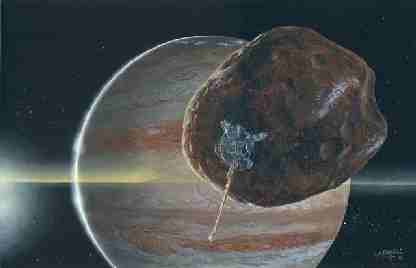An artist's depiction of what the scene must have looked like when the NASA’s Galileo spacecraft approached Amalthea, moon of Jupiter.
Click on image for full size
Courtesy of NASA
A Jupiter moon that has more holes than Swiss cheese!
News story originally written on December 11, 2002
Amalthea, a small reddish moon of Jupiter, is not made of Swiss cheese, but it does seem to be full of holes making its density surprisingly low according to new information from the Galileo spacecraft.
To figure out the density of Amalthea, scientists needed to know the mass and the volume of the moon (because, as you may know, density=mass/volume). They calculated the mass of the moon from its gravitational affect on the Galileo spacecraft, which passed 160 km (99 miles) from the moon. The volume of the moon was calculated from images like the one on the left.
They found that Amalthea has very low density. Scientists at the NASA Jet Propulsion Laboratory suggest that the rock that makes up Amalthea is broken into many pieces that are about the size of large boulders. The pieces are just barely touching each other leaving many empty gaps in the moon. “This finding supports the ideas that the inner moons of Jupiter have undergone intense bombardment and breakup. Amalthea may have formed originally as one piece, but then was busted to bits by collisions,” said Dr. Torrance Johnson, project scientist for Galileo.
Last modified December 11, 2002 by Lisa Gardiner.
You might also be interested in:

Density is a measure of how much mass is contained in a given unit volume (density = mass/volume). It is usually expressed in kg/m^3. Put simply, if mass is a measure of how much ‘stuff’ there is in an
...more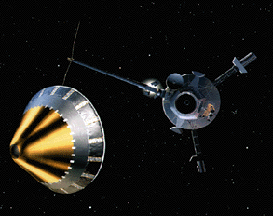
The Galileo spacecraft was launched on October 19, 1989. Galileo had two parts: an orbiter and a descent probe that parachuted into Jupiter's atmosphere. Galileo's main mission was to explore Jupiter and
...more
Would it be more difficult to pull an elephant or a mouse? If you pulled each animal with the same amount of force, the elephant would respond less to pulling, even if he didn’t pull back at all. That’s
...more
It was another exciting and frustrating year for the space science program. It seemed that every step forward led to one backwards. Either way, NASA led the way to a great century of discovery. Unfortunately,
...more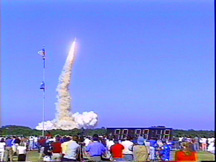
The Space Shuttle Discovery lifted off from Kennedy Space Center on October 29th at 2:19 p.m. EST. The weather was great as Discovery took 8 1/2 minutes to reach orbit. This was the United States' 123rd
...more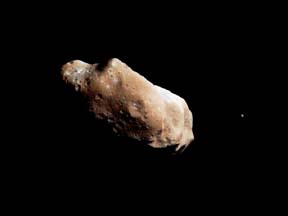
A moon was discovered orbiting the asteroid, Eugenia. This is only the second time in history that a satellite has been seen circling an asteroid. A special mirror allowed scientists to find the moon
...more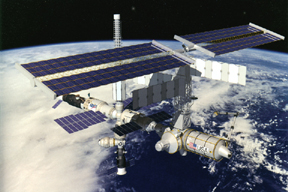
Will Russia ever put the service module for the International Space Station in space? NASA officials want an answer from the Russian government. The necessary service module is currently waiting to be
...more


